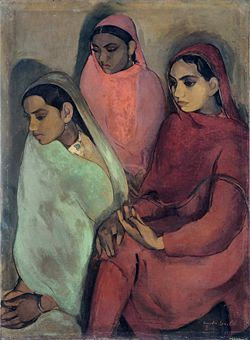(By Nalini S Malaviya)
It may sound a little surprising but there are still a number of people who are buying art, although not many are flaunting the fact. If you are one of those considering buying art, I have put together a few points here which should help you go through the process.
Investing in art has always been a fairly controversial subject where purists believe that art should be bought only if one has the passion for it, while, investors with a high risk appetite have looked at art as just another investment instrument. Therefore, it is important that you identify your reasons for buying art. In any case, if you are spending a large sum of money on art use only any spare cash that you have.
If you are planning to spend less than Rs.50,000/- this is comparatively a small amount when you consider that prices of artworks can go up to lakhs and even crores. In such a case you can look at art which is aesthetic and one that appeals to you visually. If you are spending bigger amounts it is important to evaluate and analyze the financial investment potential of the artist. Also, instead of spending a large sum at a time you can distribute it within a certain timeframe. Incidentally, you should not consider spending more than 10-15% of your disposable income on art.
Buying art can be a fairly addictive process as many collectors have found out. There is always a better and more exciting work of art round the corner. Therefore, it is important to define ones budget and stick to it.
Make sure you buy from reputed galleries and dealers who have established their credentials over time. It is always better to pick an artist who is represented by a well established gallery, which ensures that the artist is promoted appropriately. In case you are buying from a resale be extra cautious about the authenticity, provenance and the condition of the work.
When you do a background check on the artist, also see how his prices have evolved over the years. A stable rise over time is a good indication that prices may follow a similar pattern in future. However, do not go entirely by the artist’s name, but also check for quality. There will be variations in every artist’s work and remember that someone who is very prolific is less likely to focus on quality.
At the end of the day buying art is a matter of personal choice, and you should be able to make the final decision after collating all relevant data.
(Published in Bangalore Mirror)




